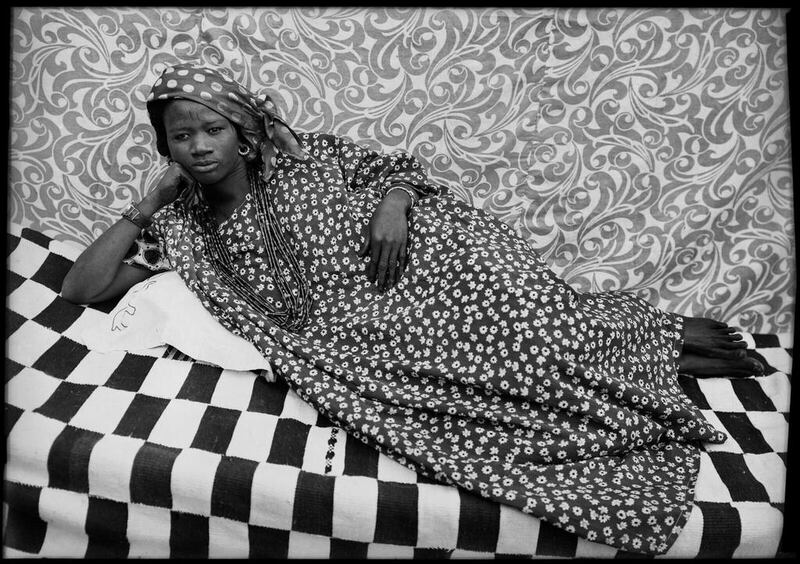Casually leaning on a large transistor radio, a woman with fine bone structure and glowing skin stares into the near distance. Although the photo is in black and white, it’s easy to conjure the colours of the polka dots on her puffed-sleeve dress and the swirling pattern of the backdrop behind her.
What is impressive about the image is that although it was taken sometime between 1948 and 1954, it is contemporary in many ways, reminiscent of the style many modern photographers use when capturing subjects for portraits.
It is also one of more than 20 monochromatic prints of photos taken by late Malian photographer Seydou Keïta that are currently on show in Leila Heller Gallery in Dubai.
Keïta is widely recognised as one of the most important African photographers of his generation. His work has been exhibited all over the world and his prints sell for thousands of dollars – ironic, considering that when he took the images, he was so concerned for his financial future that he wouldn’t even print them. Keïta died in 2001 but not before his work was discovered by Jean Pigozzi, one of the world’s biggest collectors of African art, who now manages the entire collection.
Pigozzi – who says Keïta “should be considered one of the greatest portrait photographers of the 20th century; on the same level as Richard Avedon, Irving Penn, and August Sander” – was at the recent launch of the exhibition in Dubai. The show came about after he saw a small slide of Keïta’s work tucked away in a collection. Tracking the artist down in Mali, where he discovered the photographer had some 10,000 slides in his archive.
This series of images captures the distinct personalities of Malian people in the capital city Bamako in Mali between 1948 and 1960 – the final decade of French rule.
Keïta, then a young carpenter-turned-photographer armed with the newly available Eastman Kodak Brownie camera, was commissioned to capture images of everyday people who were living through an era of change in a rapidly modernising Africa.
Not a rich man, nor confident in his abilities, Keïta charged his subjects a minimal fee for their portraits, took only one frame, and never converted them from slide format to film.
Looking at the quality of each snap and the exquisite composition and clarity once printed, it is hardly believable in today’s digital age that Keïta only took one shot. The subjects are dressed mostly in Western clothes, reflective of the society they lived in, and often stare directly into the camera. Keïta’s uncanny talent for capturing the spirit of the sitter is discernible in very image, and browsing the exhibition offers a fascinating insight into both each individual and the artist.
Many of the portraits are staged, featuring the same backdrop or clothes that Keïta provided. They depict a rich aesthetic vocabulary, seeking to capture casual moments in daily life: four women drinking tea; a man holding a rifle; a bespectacled man in a dapper suit holding a flower; a woman reclines on a check-print sofa – a contemporary commentary on the Odalisque women of the Turkish empire.
Another interesting image focuses on a little boy, dressed in shorts, braces, striped T-shirt and a beret, standing next to a bicycle. It is fascinating because the boy’s clothes could place him anywhere in France during that period; it is only his dusty knees and the soil he stands on that reveal him to be in his homeland.
Seydou Keïta runs until September 1 at Leila Heller Gallery, Alserkal Avenue, Dubai. Visit www.leilahellergallery.com
aseaman@thenational.ae





